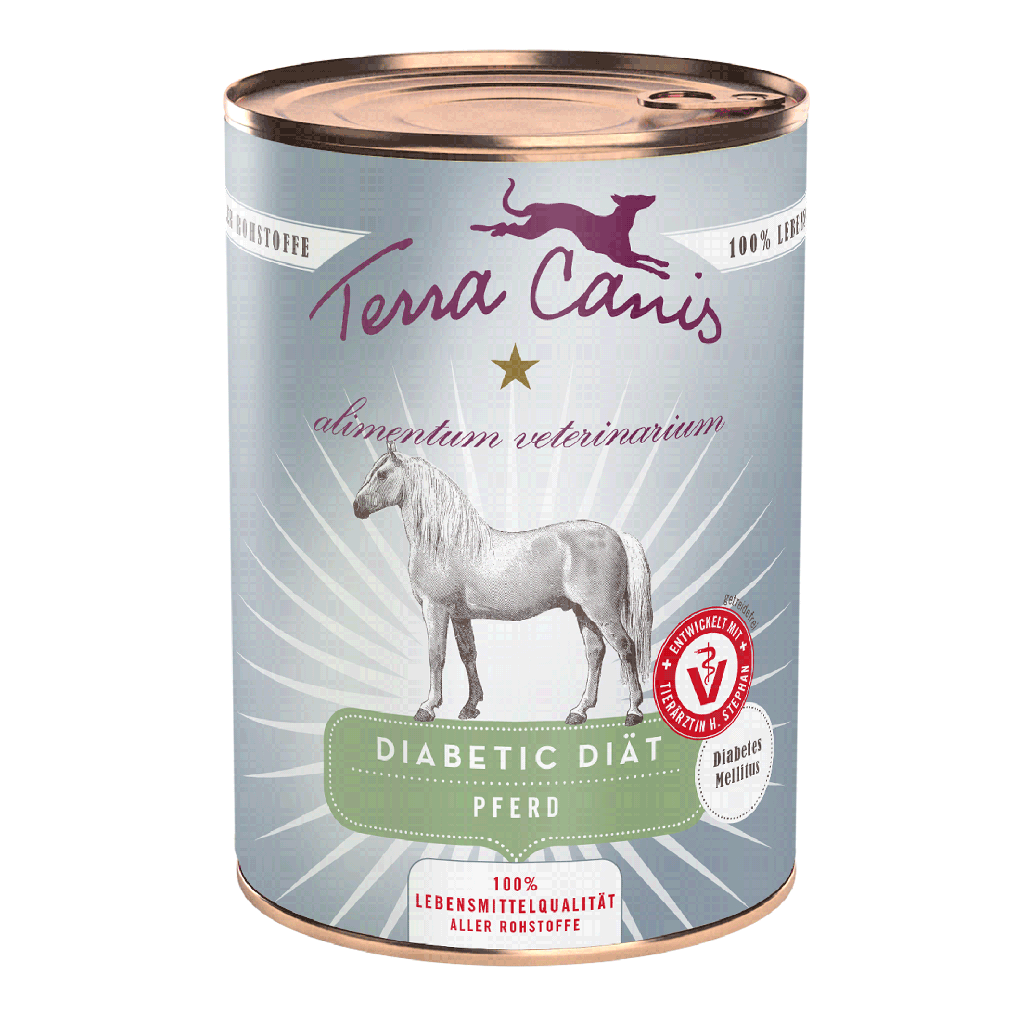Terra Canis Alivet Diabetic Pferd
AliVet DIABETIC-DIETY
Special nutritional purpose of the Diabetic Diet:
- Regulation of the glucose supply (diabetes mellitus)
Dogs that suffer from diabetes must receive insulin for the rest of their lives. In addition to this, they should be fed in such a way that the blood glucose level remains stable. In the DIABETIC DIÄT menus contain only pure, food-safe muscle meat processed muscle meat, while cereals are omitted. Highly digestible muscle meat provides healthy amino acids and omega-6 fatty acids omega-6 fatty acids without burdening the pancreas. Increased is all DIABETIC DIÄT menus contain an increased proportion of natural crude fibre from vegetables, fruit and herbs to slow down the passage of the food through the intestine through the intestine, so that nutrients are constantly released into the bloodstream. into the bloodstream. Blueberries, which are the focus of research, are added blueberries, which are the focus of research and whose secondary plant anthocyanins, play a supportive role against diabetes. against diabetes. Artichoke leaves, aloe vera and cumin are known for their ability to stabilise blood sugar levels levels, in particular to prevent so-called "sugar peaks", and to have a positive have a positive effect on cholesterol levels. The contained fenugreek is considered to lower blood sugar levels and thus have an anti-diabetic effect. Lupin is also said to have an overall lowering effect on blood sugar levels and also provides valuable amino acids. Sage and thyme provide support through their variety of antioxidants and secondary plant plant substances. The ginseng it contains is known for its positive effect effect on diabetes and its ability to lower blood sugar levels.
Diabetes mellitus is a disease which is based on an endocrine disorder. A distinction is made between diabetes type 1 and type 2 are distinguished. In type 1 diabetes, too little insulin is produced in the pancreas pancreas produces too little insulin, type 2 diabetes is characterised by a resistance to insulin, so that the mode of action is restricted or or is cancelled. Type 1 diabetes classically occurs in young animals with a genetic predisposition and rather slender animals. animals. Type 2 diabetes is the so-called "adult-onset diabetes", which occurs predominantly in senior dogs and overweight animals. In obese patients, this type can be reversible when the normal weight is normal weight is reached again. If there is too little insulin or it does not develop its full effect, glucose uptake into the cells is prevented cells is prevented, resulting in a massive increase in glucose in the blood. in the blood. In addition to polydipsia (increased drinking) and polyuria (increased urination) urine output), reduced performance, polyphagia (increased appetite) (increased appetite) and cataracts (clouding of the lens as a late consequence) are are classic symptoms of diabetes. Possible causes of diabetes are obesity, genetic predisposition, pancreatitis and glucocorticoid administration. glucocorticoid administration. Nowadays, however, obesity is considered one of the main causes for the increased occurrence of the so-called "sugar dogs".
Dietetic food for dogs.

To install this Web App in your iPhone/iPad press
![]() and then Add to Home Screen.
and then Add to Home Screen.

